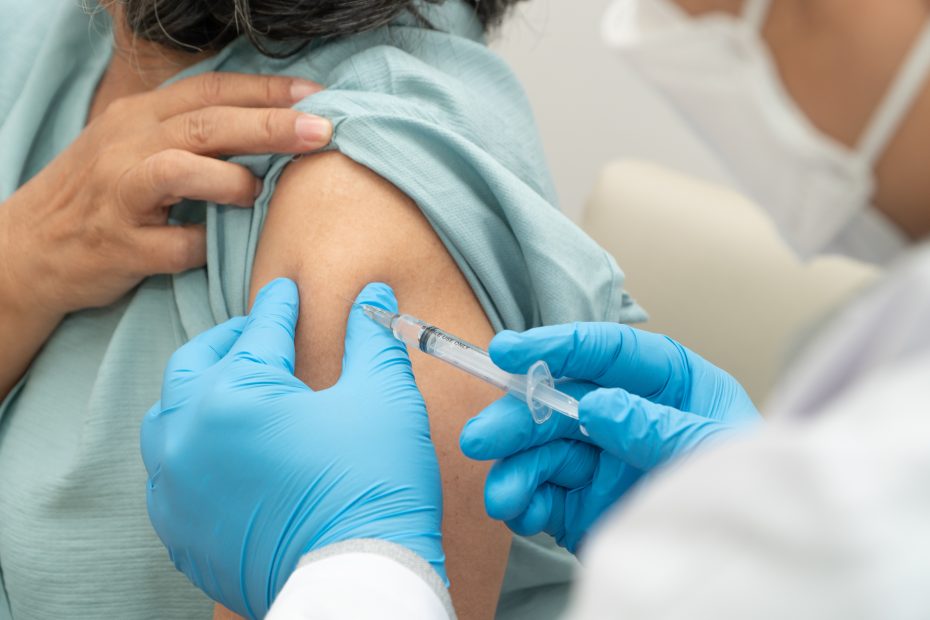Vaccinations vs. Immunisations: Unravelling the terms
Vaccinations and immunisations both involve the administration of a substance, typically a vaccine, to confer protection against specific diseases. However, there are subtle distinctions between the two:
Vaccinations:
Vaccinations specifically refer to the act of receiving a vaccine. A vaccine is a biological preparation containing weakened or killed pathogens, or parts of them, that stimulate the body’s immune system to recognise and swiftly neutralise the pathogen upon future exposure, thereby preventing illness or reducing its severity. Vaccinations are administered through injections, oral drops, or nasal sprays, depending on the type of vaccine and the targeted disease.
Immunisations:
Immunisations encompass the broader process of becoming immune to a particular disease. It involves not only receiving vaccines but also encompasses the body’s natural response to vaccination, which includes the development of immunity over time. Immunisation can also occur through natural exposure to a pathogen, although this carries risks of severe illness or complications. Through vaccinations, individuals undergo a controlled and safer route to attain immunity, bolstering their defences against infectious diseases.
The crucial role of Vaccinations and Immunisations in society
The impact of vaccinations and immunisations on society cannot be overstated. Here’s how they contribute to the collective well-being:
1. Disease prevention
Vaccinations and immunisations are pivotal in preventing the spread of infectious diseases. By conferring immunity at both individual and population levels, they create a shield of protection, reducing the likelihood of outbreaks and epidemics.
2. Eradication and control
Through widespread vaccination campaigns, humanity has achieved remarkable feats in eradicating or controlling once-devastating diseases. Examples include the eradication of smallpox and the near elimination of polio in many parts of the world.
3. Health equity
Vaccination programs promote health equity by ensuring access to preventive care regardless of socioeconomic status. They help mitigate disparities in disease burden and contribute to levelling the playing field for vulnerable populations.
4. Economic benefits
By preventing illness, vaccinations and immunisations alleviate the economic burden associated with healthcare expenditures, lost productivity, and disability caused by infectious diseases. They yield substantial long-term savings for healthcare systems and societies.
Managing adverse reactions in Australia: A first aid perspective
While vaccines are generally safe and well-tolerated, adverse reactions can occur in rare instances. In Australia, healthcare professionals follow established protocols to manage adverse reactions to immunisations and vaccinations promptly and effectively. Here’s an overview of the steps involved:
1. Recognise symptoms
First aid providers must be vigilant in recognising signs of adverse reactions, which may include fever, rash, swelling at the injection site, or more severe symptoms like anaphylaxis.
2. Provide immediate care
For mild reactions such as fever or discomfort at the injection site, symptomatic relief measures like rest, hydration, and over-the-counter pain relievers may suffice.
3. Respond to anaphylaxis
In cases of severe allergic reactions or anaphylaxis, immediate administration of epinephrine (adrenaline) via an auto-injector is critical. First aid providers should be trained in recognising and responding to anaphylactic emergencies promptly.
4. Seek medical assistance
For serious or persistent adverse reactions, it’s essential to seek medical attention promptly. Healthcare professionals can assess the situation and provide appropriate treatment, and document the incident for monitoring and reporting purposes.
In conclusion, vaccinations and immunisations serve as powerful tools in the ongoing battle against infectious diseases, contributing to improved health outcomes and societal well-being. By understanding their distinctions, benefits, and protocols for managing adverse reactions, we can foster informed decision-making and ensure the continued success of public health initiatives in Australia and beyond.
Don’t forget to visit our Blog page for more articles on other interesting topics.
If you want to stay informed on health and wellness, take a look at our courses available here and if you’re looking for first aid equipment for your business or home, we have a great range you can shop online here.
